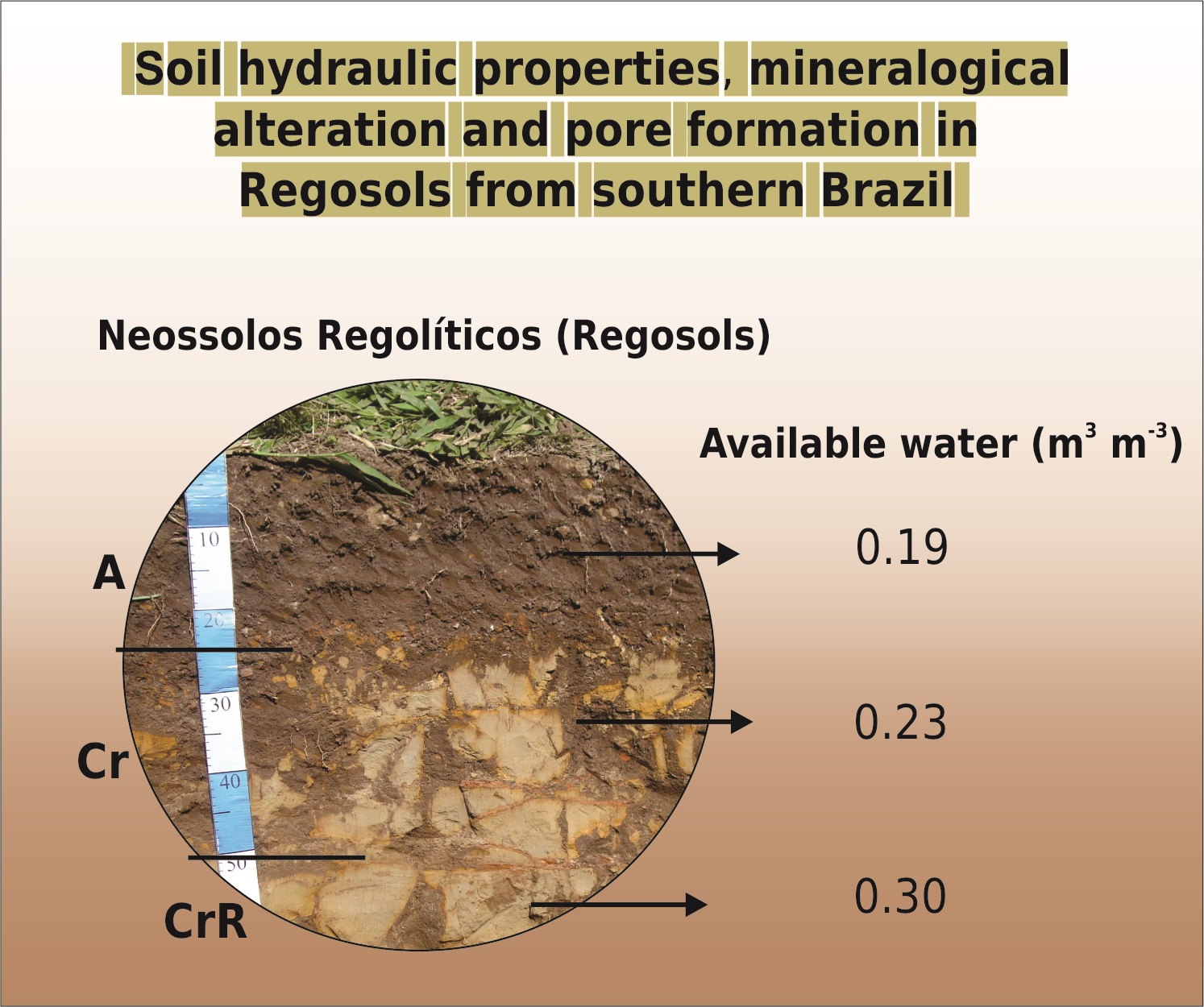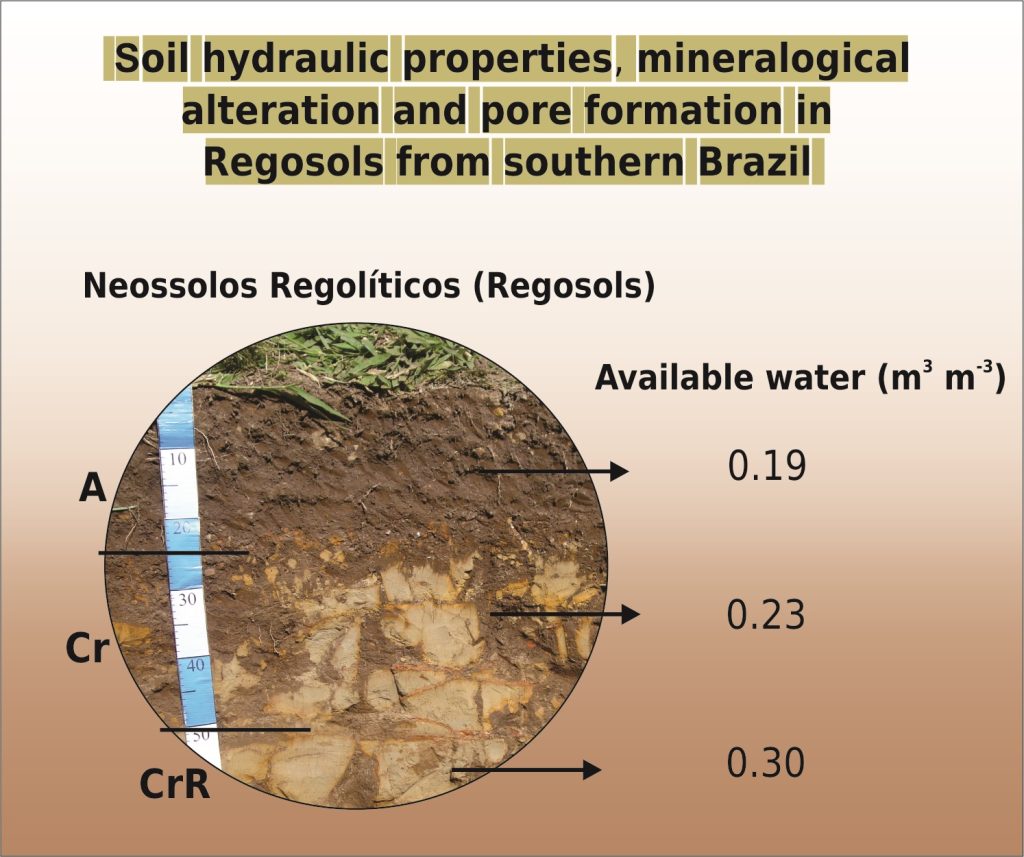Rev. Bras. Ciênc. Solo.2024;48:e0240013.
Soil hydraulic properties, mineralogical alteration and pore formation in Regosols from southern Brazil
27/Aug/2024
DOI: 10.36783/18069657rbcs20240013
Graphical Abstract

Highlights
Has the shallow and stony soil physical properties appropriated to grain production?
The saprolite (Cr horizon) in the Regosols has presented high water retention.
It is common the Cr horizons present greater available water than the A horizons.
Mineralogical data shows the pore formation in the saprolite horizons.
ABSTRACT
Regosols (Neossolos) are soils with use limitations mainly related to effective depth, abundant presence of rock and saprolite fragments, and frequently high slope gradients; besides that, they represent a new agricultural frontier for grain production in southern Brazil. This study evaluated soil saturated hydraulic conductivity (Ksat) and water retention and availability in Regosols and saprolites derived from volcanic rocks in southern Brazil and the relationship of these variables with porosity in saprolithic horizons characterized by mineralogical weathering. The study was carried out on eight profiles derived from basic and acidic volcanic rocks of the Serra Geral Formation. We evaluated soil morphology, granulometry, porosity, bulk density (BD), Ksat, water retention, electronic/ optical microscopy and chemical composition of parent materials, and soil mineralogy. Soil Ksat ranged from 0.0 to 6.40 cm h-1 in the evaluated horizons, without significant difference between the A and Cr horizons. Seven soil profiles showed BD equal to or less than 1.28 Mg m-3 for the Cr samples. Total porosity in the Cr horizons was above 0.5 m3 m-3 and not significantly different from A horizons. In five of the eight soil profiles, one or more Cr horizons presented greater available water than A horizons. Electronic and optical microscopy evidenced abundant cracks and mineralogical weathering in the rock samples. X-rays diffraction data also indicated advanced degree of weathering of Cr horizons, evidencing abundant formation of pores in the saprolite. and justifying the high-water retention in Regosols profiles in southern Brazil.
334

